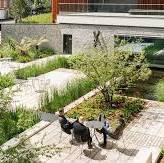The Importance of Landscape Planning in Urban Development
When it comes to shaping the future of our cities, landscape planning plays a crucial role in creating sustainable and liveable urban environments. It goes beyond just beautifying spaces; it involves strategic design and management of outdoor areas to enhance the quality of life for residents.
Enhancing Quality of Life
Landscape planning focuses on creating green spaces, parks, and recreational areas that not only provide aesthetic value but also offer numerous benefits to the community. Access to greenery has been proven to reduce stress, improve mental health, and promote physical well-being among residents.
Environmental Sustainability
By incorporating green infrastructure into urban planning, landscape architects can help mitigate the effects of climate change. Trees and vegetation can act as natural filters for air and water pollutants, reduce heat island effects, and promote biodiversity in urban areas.
Community Engagement
Effective landscape planning involves engaging with local communities to understand their needs and preferences. By involving residents in the design process, planners can create spaces that are tailored to the specific requirements of the community, fostering a sense of ownership and pride.
Economic Benefits
Well-designed landscapes can have a positive impact on property values and attract businesses and tourists to an area. Investing in green spaces can lead to economic revitalisation by creating attractive destinations for both residents and visitors.
Sustainable Development Goals
Landscape planning aligns with several Sustainable Development Goals (SDGs) set by the United Nations, including goal 11 (Sustainable Cities and Communities) and goal 15 (Life on Land). By prioritising green infrastructure in urban development projects, cities can move closer towards achieving these global targets.
In conclusion, landscape planning is a vital component of urban development that contributes to creating vibrant, resilient cities for current and future generations. By recognising the importance of green spaces in our communities, we can build healthier, more sustainable environments that benefit us all.
Top 5 Tips for Effective Landscape Planning in the UK
- Consider the natural features of the land when planning a landscape.
- Create focal points in the landscape to draw attention and create visual interest.
- Use a variety of plants to add diversity and texture to the landscape.
- Plan for proper drainage to prevent waterlogging and erosion issues.
- Regularly maintain and update your landscape design to keep it looking its best.
Consider the natural features of the land when planning a landscape.
When embarking on landscape planning, it is essential to carefully consider the natural features of the land to ensure a harmonious and sustainable design. By taking into account elements such as the terrain, soil quality, water sources, and existing vegetation, planners can create landscapes that not only blend seamlessly with the surroundings but also thrive in their natural environment. This approach not only enhances the aesthetic appeal of the space but also promotes biodiversity and ecosystem health, contributing to a more resilient and ecologically balanced urban environment.
Create focal points in the landscape to draw attention and create visual interest.
Creating focal points in the landscape is a key tip in effective landscape planning as it helps draw attention and create visual interest. By strategically placing elements such as sculptures, water features, or unique plantings, designers can guide the viewer’s gaze and enhance the overall aesthetic appeal of the space. Focal points not only serve as visual anchors but also add depth and character to the landscape, making it more engaging and memorable for visitors.
Use a variety of plants to add diversity and texture to the landscape.
Utilising a diverse selection of plants is a key tip in landscape planning as it adds richness and texture to the overall aesthetic of the environment. By incorporating a variety of plant species with different colours, shapes, and sizes, landscape designers can create visually appealing and dynamic spaces that enhance the beauty and interest of the landscape. Additionally, diverse plantings can attract a wider range of wildlife, promote biodiversity, and contribute to a healthier ecosystem within the urban environment.
Plan for proper drainage to prevent waterlogging and erosion issues.
When undertaking landscape planning, it is essential to incorporate proper drainage systems to mitigate the risks of waterlogging and erosion. By strategically planning for efficient water management, such as implementing permeable surfaces and rain gardens, we can prevent stagnant water accumulation and soil erosion issues. This proactive approach not only safeguards the integrity of the landscape but also promotes sustainable practices that contribute to a healthier urban environment.
Regularly maintain and update your landscape design to keep it looking its best.
Regular maintenance and regular updates are essential aspects of effective landscape planning to ensure that your outdoor spaces remain visually appealing and functional. By staying on top of maintenance tasks such as pruning, weeding, and watering, you can preserve the health and beauty of your landscape design. Additionally, updating elements of your design periodically allows you to incorporate new trends, technologies, or plants that can enhance the overall aesthetic and functionality of your outdoor environment. Keeping your landscape design well-maintained and up-to-date ensures that it continues to look its best and serves its intended purpose for years to come.
